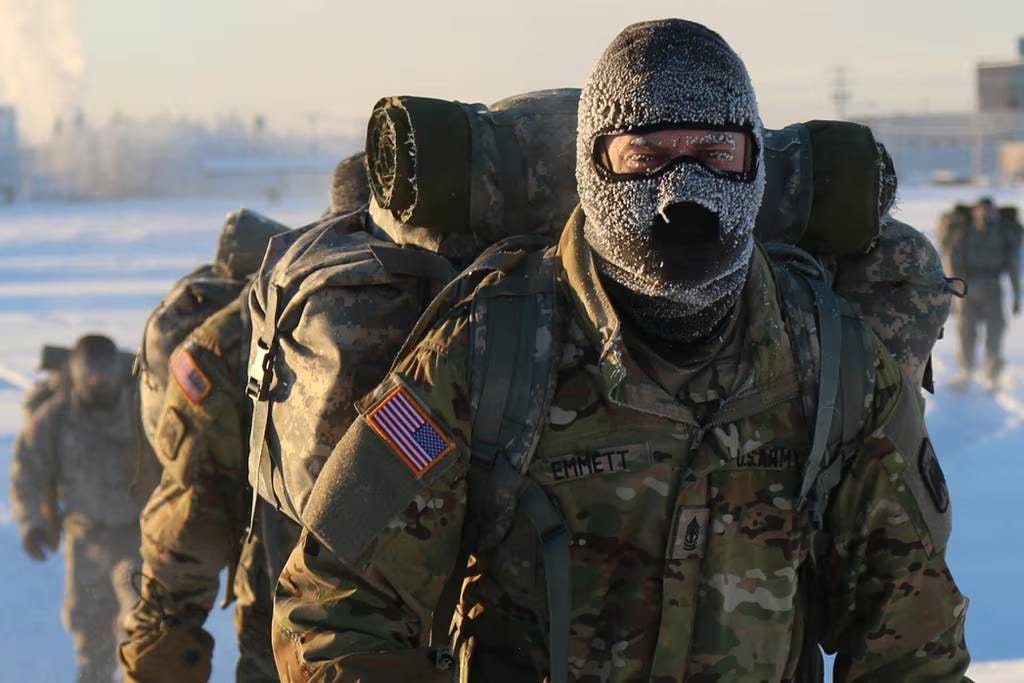Battleground Arctic: Militarization in the High North
Once a place of peaceful cooperation, Russia and NATO are moving to militarize the Arctic like never before.
Arctic Tough 1st Sgt. Jonathan M. Emmett leads U.S. Army Alaska Aviation Task Force Soldiers assigned to Headquarters Company, 1-52 Aviation Regiment, at Fort Wainwright, Alaska. Image source
Between March 3–14, over 20,000 soldiers from 13 North Atlantic Treaty Organization (NATO) member states took part in the Nordic Response exercise. Held in the frigid northern reaches of Finland, Norway, and Sweden, the exercise included more than 160 fighter aircraft and ships in a simulated response to an assault on NATO troops in the Arctic Circle. Nordic Response was just one portion of NATO’s broader Steadfast Defender exercise, which runs between January and May and is the largest exercise of its kind since the Cold War. Russia’s deputy foreign minister called the exercises “provocative,” saying they are “creating additional risks in northern Europe.”
Over the past decade, NATO members have taken part in an increased number of drills in the Arctic region. Moreover, every country with arctic territories – including seven NATO members and Russia – has systematically upgraded its cold-weather combat capabilities while increasing its military presence in the far north. Although the Arctic was once primarily a place of great power cooperation – even during the Cold War – it is now emerging as a potential theater of conflict. With climate change facilitating vast efforts to tap the region’s largely untapped commercial potential, the threats to global security in this region have never been greater.
NATO troops participating in Nordic Response 2024. Image source
NATO-Russia competition
The Arctic is home to many overlapping territorial claims between the states that comprise it. In 2023, the U.S. claimed one million square kilometers of Arctic seabed in the Beaufort Sea, resulting in a dispute with fellow NATO member Canada. This contested area is part of the Amerasian Basin, which is estimated to contain some 9,723 million barrels of oil and over 56,000 billion cubic feet of natural gas. The Lomonosov Ridge – a 1,700-kilometer-long underwater mountain range – is even more heavily contested as it is claimed by NATO members Canada and Denmark as well as Russia. Estimates claim that as much as 30 percent of unexplored global natural gas reserves and 15 percent of unexplored oil reserves lay beneath arctic waters, including those of the largely unexplored Lomonosov Ridge.
For decades, the Arctic remained conflict-free and was largely an area of cooperation between the West and Moscow despite being home to numerous contested territorial claims. However, this status quo has been upended by growing competition between Russia and NATO, which recently expanded to include the two remaining arctic states of Finland and Sweden in 2023 and 2024, respectively. With the entirety of the Arctic now comprised of these competing powers, the regional stage is set for an increasingly adversarial environment.
Keep reading with a 7-day free trial
Subscribe to Between the Lines to keep reading this post and get 7 days of free access to the full post archives.





